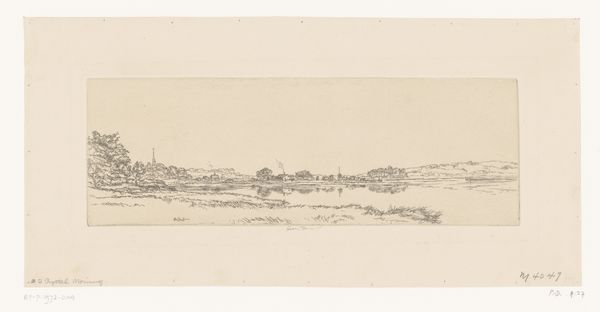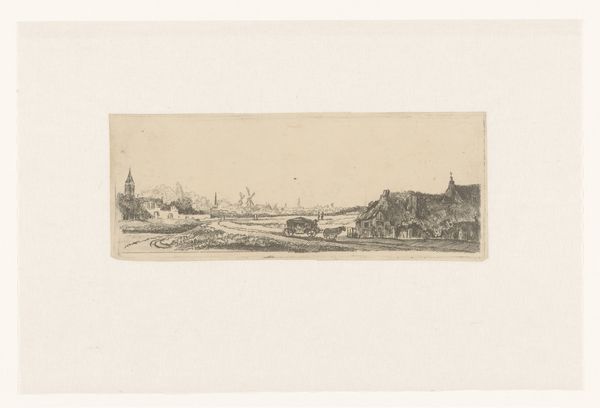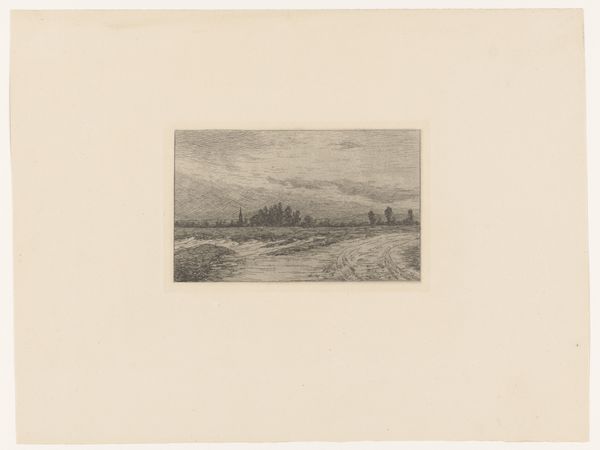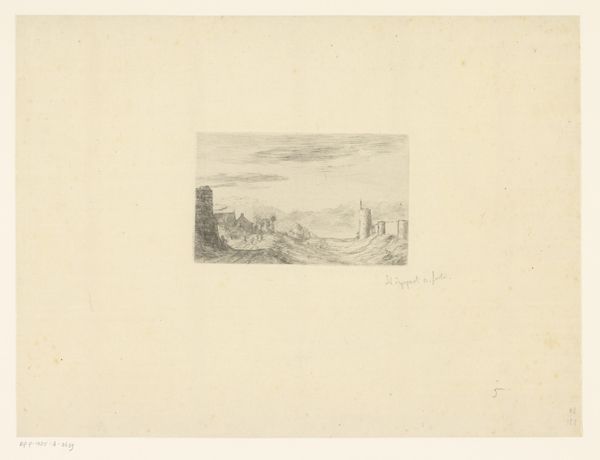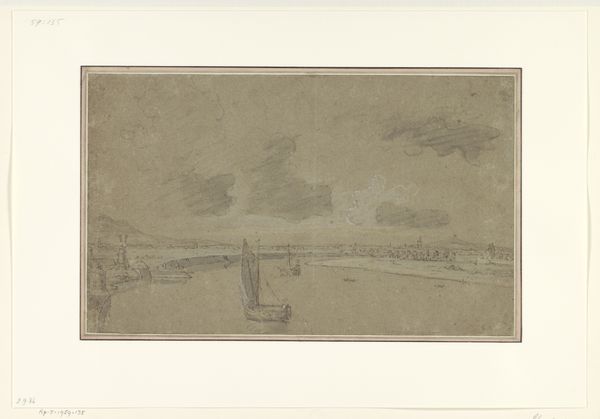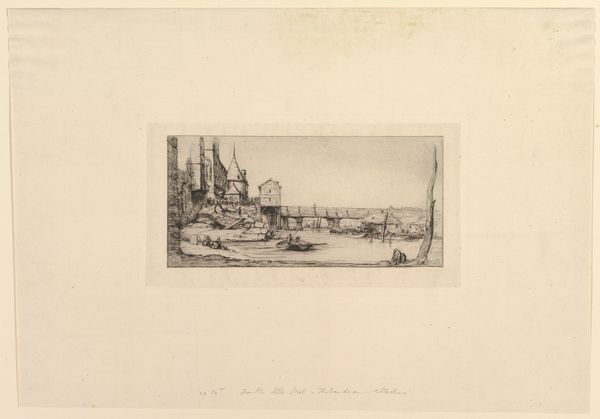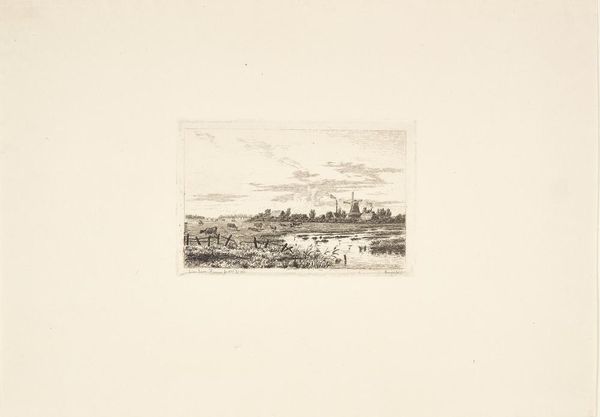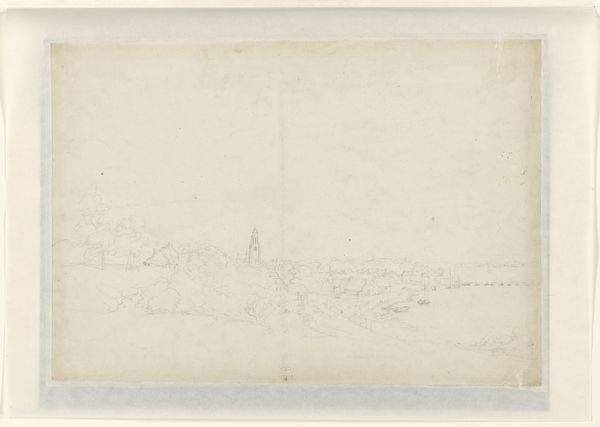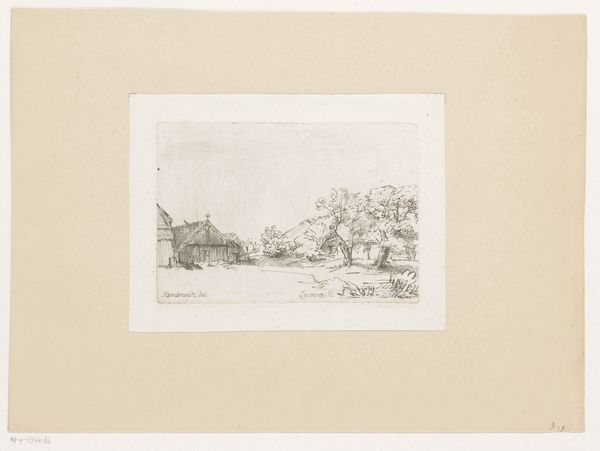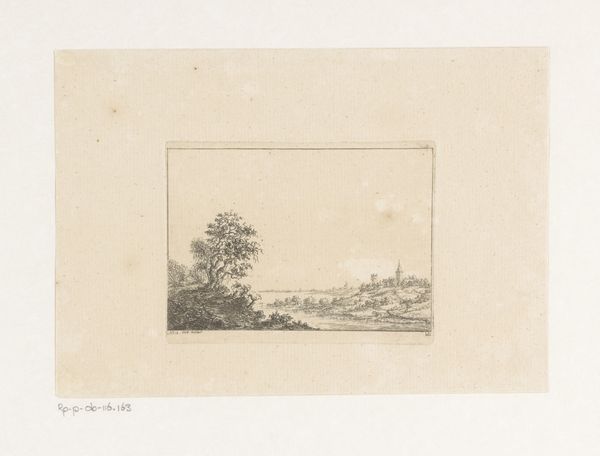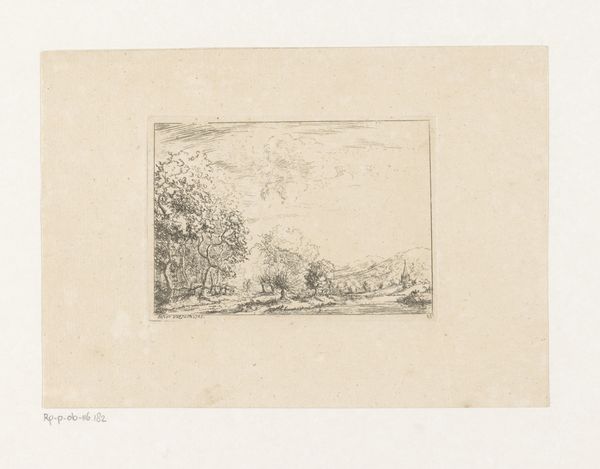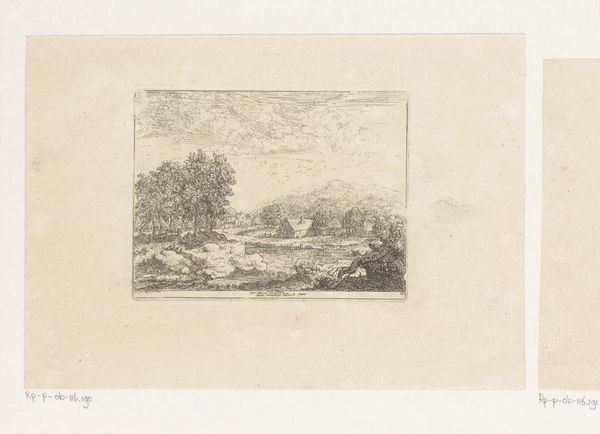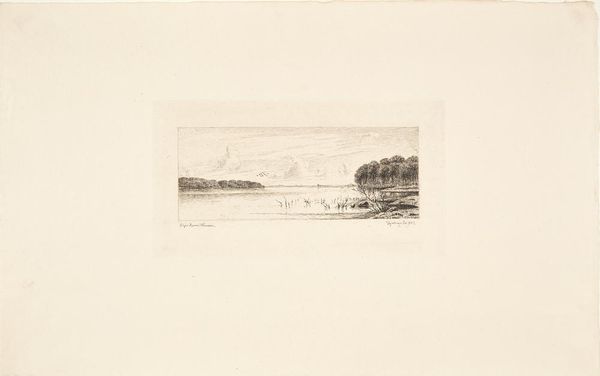
print, etching, paper
#
baroque
# print
#
etching
#
landscape
#
paper
#
line
Dimensions: height 80 mm, width 126 mm
Copyright: Rijks Museum: Open Domain
Claude Henri Watelet created this landscape with a tower using etching techniques in eighteenth-century France. This was a time when the French aristocracy, which Watelet himself belonged to, were commissioning idealized landscapes that reflected the social structures they wanted to see. The images were often informed by the philosophical ideas of the Enlightenment that were fashionable in the salons of Paris. You can see how Watelet’s composition, with its delicate lines and carefully balanced forms, echoes the Enlightenment emphasis on reason, order, and harmony. But landscapes weren't just pretty pictures. They also communicated ideas about ownership, control, and the relationship between humanity and nature. By studying the art and literature of the time, we can see how these images reinforced the power and privilege of the ruling classes. Looking at the archives of the Académie royale de peinture et de sculpture gives even more context for understanding the social meanings that were circulating in Watelet’s cultural milieu.
Comments
No comments
Be the first to comment and join the conversation on the ultimate creative platform.
